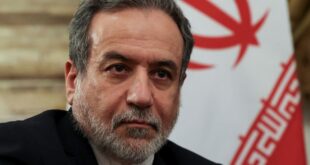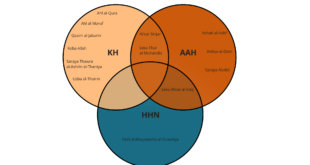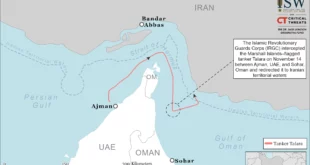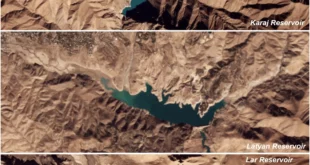 TEHRAN (FNA)- India’s External Affairs Minister Pranab Mukherjee will visit Iran from November 1 to attend a Joint Commission meeting during which the two countries are likely to sign three agreements and explore ways of improving trade and transit infrastructure.
TEHRAN (FNA)- India’s External Affairs Minister Pranab Mukherjee will visit Iran from November 1 to attend a Joint Commission meeting during which the two countries are likely to sign three agreements and explore ways of improving trade and transit infrastructure.
Tehran hopes that the two sides will be able to discuss the Iran-Pakistan-India (IPI) gas pipeline, whose trilateral future hangs in the balance because of New Delhi’s sensitivity over the transit route through Pakistan.
Iranian diplomats in New Delhi feel that with the conclusion of the India-US nuclear deal, New Delhi could be willing to make a forward movement on the project.
Indian sources said the focus would be more on improving the economic climate for Indian companies interested in operating in Iran, which is why New Delhi would want a double tax avoidance agreement signed during Mukherjee’s visit.
While Essar is setting up an aluminum unit and interested in operating a jetty at the Chabahar port, Tata Steel recently signed an agreement to build a steel plant near the Strait of Hormuz.
This is in line with the perception that the American aversion to doing trade with Iran has ebbed after the US intelligence said Tehran is not pursuing a military drive in its nuclear activities.
The United States and its Western allies accuse Iran of trying to develop nuclear weapons under the cover of a civilian nuclear program, while they have never presented any corroborative document to substantiate their allegations. Iran denies the charges and insists that its nuclear program is for peaceful purposes only.
Tehran stresses that the country has always pursued a civilian path to provide power to the growing number of Iranian population, whose fossil fuel would eventually run dry.
Washington’s push for additional UN penalties contradicts a recent report by 16 US intelligence bodies that endorsed the civilian nature of Iran’s programs. Following the US National Intelligence Estimate (NIE) and similar reports by the IAEA head – one in November and the other one in February – which praised Iran’s truthfulness about key aspects of its past nuclear activities and announced settlement of outstanding issues with Tehran, any effort to impose further sanctions on Iran seems to be completely irrational.
Following the said report, Austria and Switzerland embarked on signing agreements to build a gas pipeline running through Turkey with a terminal in Croatia and several corporates have opened talks with Tehran for investing in the country.
Iranian diplomats hope that even though Tehran and Islamabad have decided to go ahead with the project, they will be able to discuss the prospects of convincing India to take the talks forward.
Iran and Pakistan initiated a Gas Sales Purchase Agreement earlier this year. India and Pakistan have also resolved all bilateral issues including transit fee which saw New Delhi boycotting IPI pipeline talks for about a year.
India has more or less agreed to give Pakistan a transit fee of $200 million per year, which is equivalent to $0.60 per million British thermal unit for allowing passage of the pipeline through that country.
India and Pakistan finally agreed in February 2007 to pay Iran $4.93 per million British thermal units ($4.67/GJ) but some details relating to price adjustment remained open to further negotiation. There was a breakthrough in the talks in April 2008 when Iranian President Mahmoud Ahmadinejad visited Pakistan and India.
According to the project proposal, the pipeline will begin from Iran’s Assalouyeh Energy Zone in the south and stretch over 1,100 km through Iran. In Pakistan, it will pass through Baluchistan and Sindh but officials now say the route may be changed if China agrees to the project.
The gas will be supplied from the South Pars field. The initial capacity of the pipeline will be 22 billion cubic meter of natural gas per annum, which is expected to be later raised to 55 billion cubic meter. It is expected to cost $7.4 billion.
According to Indian ministry sources, the IPI gas pipeline is quite crucial for New Delhi as after signing of the agreement, 60 million standard cubic meters per day (mmscmd) of gas is expected to be supplied in phase-I, which will be shared equally between India and Pakistan.
In phase-II, 90 mmscmd of gas will be supplied to India and Pakistan. So far six meetings of the trilateral joint working group (JWG) of the participating countries have been held with the last meeting being held in New Delhi on June 28-29, 2007.
India, Asia’s third-largest economy, can produce only half the gas it needs to generate electricity, causing blackouts and curbing economic growth. Demand may more than double to 400 million cubic meters a day by 2025 if the economy grows at the projected rate of 7 to 8 percent a year, according to the Indian oil ministry.
Iran plans to start exporting gas to Pakistan in 2011. Iran has completed half the pipeline, which can carry 110 million cubic meters of gas a day, National Iranian Gas Company (NIOC) said in April. India uses about 108 million cubic meters of gas a day, according to a BP Plc report.
 Eurasia Press & News
Eurasia Press & News



